Carpet beetles may seem harmless, but these tiny creatures can wreak havoc on your home, furniture, and even your health. In this eye-opening article, you will discover the hidden dangers of carpet beetles and learn why it’s crucial to take immediate action if you suspect an infestation. From damaging fabrics to triggering allergic reactions, these pesky pests are more than just a nuisance. Join us as we explore the world of carpet beetles and uncover the secrets behind their destructive capabilities.
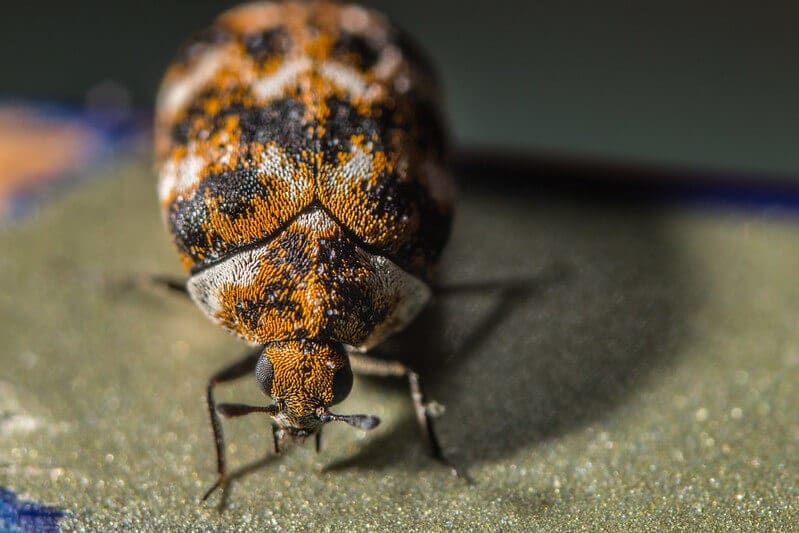
Introduction
Welcome to our comprehensive guide on carpet beetles! In this article, we will explore everything you need to know about these tiny but bothersome pests. We will cover topics ranging from the identification and life cycle of carpet beetles to the damage they can cause and the health risks associated with them. We will also discuss signs of infestation and prevention methods, as well as various ways to get rid of carpet beetles. So, let’s dive in and learn about these hidden dangers lurking in our carpets!
What are Carpet Beetles?
Carpet beetles are small insects belonging to the family Dermestidae, which includes several species such as the varied carpet beetle, black carpet beetle, and furniture carpet beetle. These tiny bugs are often found in homes and can cause significant damage to carpets, fabrics, and other household items. Let’s take a closer look at their identification, life cycle, and feeding habits.
Identification
Carpet beetles are typically around 1/8 to 3/16 of an inch in length and have a round or oval shape. Their bodies are covered with scales or setae, which give them a fuzzy or hairy appearance. The color of carpet beetles can vary depending on the species, ranging from black to brown or mottled patterns. Some species also have distinctive markings such as spots or bands on their wings.
Life Cycle
Understanding the life cycle of carpet beetles is crucial for effective pest control. These insects undergo complete metamorphosis, which includes four stages: egg, larva, pupa, and adult. The eggs are small and white, often laid on or near suitable food sources. Once hatched, the larvae are the most destructive stage, causing the majority of the damage. They have a distinctive shape, resembling a tiny hairy caterpillar. After feeding and molting multiple times, the larvae eventually enter the pupal stage before emerging as fully developed adult beetles.
Feeding Habits
Carpet beetles are not picky eaters and can consume a wide range of organic materials. Their primary sources of food include animal products such as wool, fur, feathers, and silk. However, they can also feed on plant-based materials like cotton, linen, and even synthetic fabrics if the conditions are favorable. In addition to fabrics, carpet beetles may also infest stored food products such as grains, cereals, and pet food.
Damage Caused by Carpet Beetles
Carpet beetles may seem harmless due to their small size, but they can wreak havoc on your home and pose several risks to your health. Let’s explore the damage they can cause and the potential health issues associated with carpet beetle infestations.
Carpet and Fabric Damage
One of the most evident signs of a carpet beetle infestation is damage to carpets and fabrics. The larvae are the main culprits, as they feed on natural fibers and can quickly ruin your carpets, upholstery, and clothing. They create irregularly shaped holes and chew through the fabric, leaving behind an unsightly mess. If left unchecked, carpet beetle larvae can cause extensive damage, leading to costly replacements or repairs.
Allergic Reactions
Carpet beetles can trigger allergic reactions in some individuals. The larvae shed tiny hairs or setae, which can become airborne and be inhaled. These hairs can irritate the respiratory system and cause symptoms similar to those experienced with allergies. Sneezing, coughing, watery eyes, and runny noses are common allergic reactions associated with carpet beetle infestations.
Skin Irritation
In addition to respiratory issues, carpet beetle larvae can also cause skin irritation. The tiny hairs they shed can come into contact with your skin, leading to itching, redness, and rashes. Individuals with sensitive skin or those who have a higher exposure to the larvae may experience more severe skin reactions.
Respiratory Issues
For individuals with asthma or other respiratory conditions, a carpet beetle infestation can exacerbate their symptoms. The airborne hairs shed by the larvae can trigger asthma attacks or cause respiratory distress. If you or someone in your household has respiratory issues, it is essential to address a carpet beetle infestation promptly to maintain a healthy indoor environment.
Health Risks Associated with Carpet Beetles
Carpet beetles not only cause physical damage but also pose health risks to humans. Let’s delve into some of the health issues that can arise from carpet beetle infestations.
Carpet Beetle Dermatitis
Carpet beetle larvae hairs can cause a skin condition known as carpet beetle dermatitis. This condition manifests as itchy, red bumps on the skin, similar to an allergic reaction. The intense itching can lead to scratching, potentially resulting in secondary infections. If you notice any skin irritation or unexplained rashes, it is crucial to consider the possibility of a carpet beetle infestation.
Asthma and Allergies
As mentioned earlier, carpet beetles can trigger allergies and asthma symptoms in some individuals. For those with pre-existing respiratory conditions, exposure to carpet beetle larvae hairs can worsen their symptoms, leading to increased coughing, wheezing, and difficulty breathing. Managing and eliminating a carpet beetle infestation is vital for maintaining good respiratory health.
Mental Health Impact
Dealing with a carpet beetle infestation can take a toll on your mental well-being. The stress and frustration of battling these pests, coupled with the damage they cause, can lead to increased anxiety and decreased quality of life. Sleep disturbances and feelings of unease or discomfort in your own home are common psychological side effects of a carpet beetle infestation.
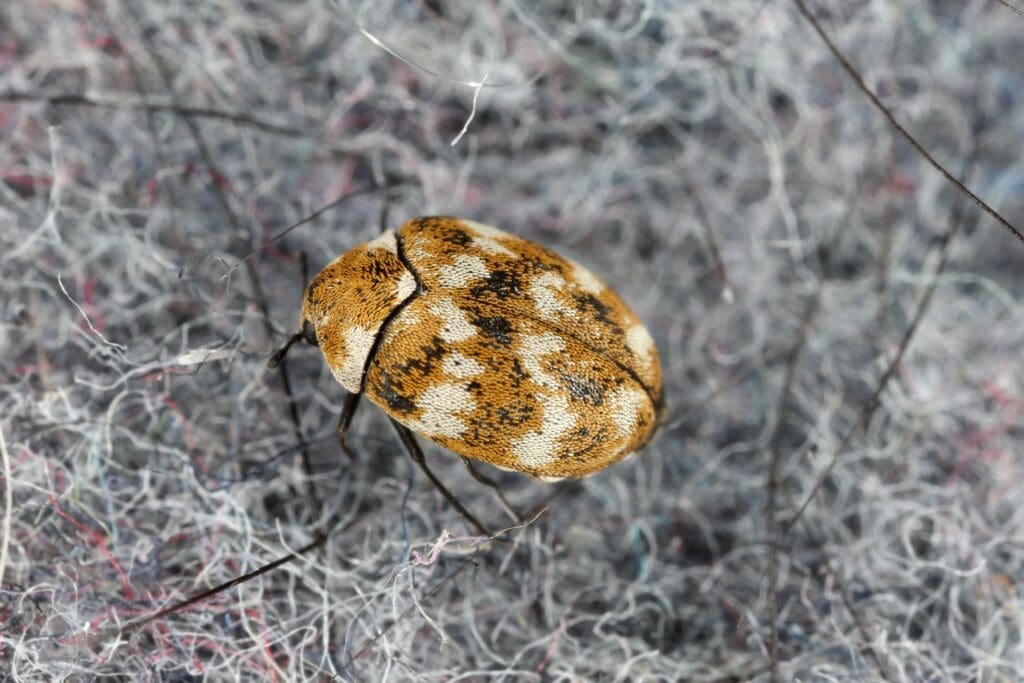
Signs of Carpet Beetle Infestation
Early detection of a carpet beetle infestation is key to preventing extensive damage and health-related issues. Here are the signs to look out for:
Visible Adult Beetles
While carpet beetle larvae are the main culprits, seeing adult beetles is a sign of an infestation. Adult beetles may fly indoors seeking suitable locations to lay eggs. If you notice small beetles crawling or flying around your home, it is an indication that there might be a carpet beetle infestation.
Shed Skins and Larvae
Carpet beetle larvae go through multiple molting stages as they grow. These larvae shed their skins or casings, leaving behind tiny, often unnoticed, remnants. If you come across small, brownish casings or shed skins around your home, it is a clear sign of a carpet beetle infestation. Additionally, spotting the larvae themselves is a significant indicator of a problem.
Damage to Fabrics
Inspect your carpets, rugs, and upholstered furniture for signs of damage. Carpet beetle larvae feed on fabric fibers, leaving behind irregular holes or chewed areas. Look for worn spots, thinning, or any signs of material degradation that are not easily explained.
Presence of Tubular Cases
Carpet beetle larvae create protective cases made of fibers and debris as they move around. These tubular cases are often hidden in dark, undisturbed areas, such as behind baseboards or within cracks and crevices. Finding these cases is a clear sign of an ongoing infestation.
Preventing Carpet Beetle Infestations
Prevention is always better than dealing with a full-blown carpet beetle infestation. By implementing the following preventive measures, you can greatly reduce the chances of these pests invading your home.
Regular Vacuuming
Regular vacuuming is essential to keep your home free from carpet beetles. Vacuum all carpets, rugs, and upholstered furniture thoroughly, paying particular attention to areas along baseboards, under furniture, and corners where debris can accumulate. Dispose of the vacuum bag or clean the canister to remove any captured beetles or larvae.
Proper Storage of Fabrics
Ensure that fabrics, such as clothing and linens, are stored properly to minimize the risk of carpet beetle infestations. Clean the items before storing them, as carpet beetles are attracted to sweat, skin cells, and other organic matter. Use airtight containers or sealed bags to store fabrics and periodically inspect stored items for any signs of infestation.
Sealing Entry Points
Sealing potential entry points can help keep carpet beetles out of your home. Inspect windows, doors, and any gaps or cracks in your home’s exterior and seal them properly. Also, ensure that screens on windows and doors are intact and free from holes or tears that could allow pests to enter.
Maintaining Cleanliness
Maintaining a clean and clutter-free living environment can deter carpet beetles. Regularly dust and clean your home, paying attention to areas that are often overlooked, such as under furniture and behind appliances. Minimize clutter as much as possible, as it provides hiding places for carpet beetles and makes detection and control more difficult.
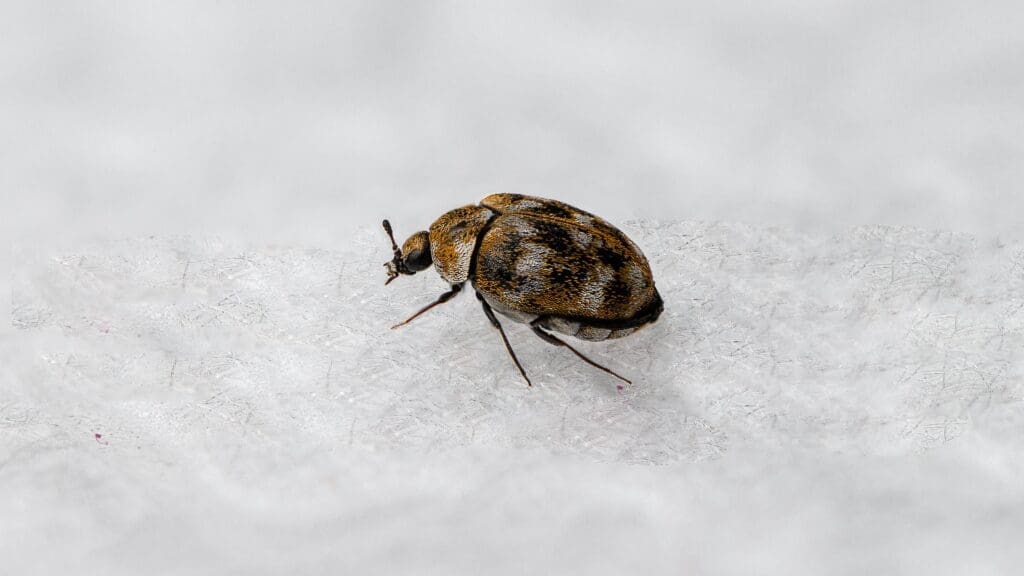
Getting Rid of Carpet Beetles
If you already have a carpet beetle infestation, it is crucial to take immediate action to eliminate these pests. Here are various methods you can employ to get rid of carpet beetles.
Natural Remedies
Natural remedies can be an effective and environmentally friendly way to control carpet beetles. Some options include diatomaceous earth, which dehydrates and kills the beetles, and sticky traps that attract and capture adult beetles. Natural repellents like cedarwood or lavender sachets can also deter carpet beetles from infesting certain areas.
Chemical Treatments
Chemical treatments can offer more aggressive control of carpet beetles but should be used with caution. Insecticide sprays formulated specifically for carpet beetles can be applied to infested areas, targeting both adult beetles and larvae. Insecticide dusts, such as boric acid, can be used in cracks, crevices, and voids where carpet beetles may hide.
Professional Pest Control
For severe infestations or situations where the DIY approaches haven’t been effective, it may be necessary to seek professional pest control services. Pest control professionals have access to stronger insecticides and can provide comprehensive treatments tailored to your specific situation. They can safely and effectively eliminate carpet beetles and provide long-term prevention strategies.
Home Remedies for Carpet Beetle Control
If you prefer to try home remedies before resorting to chemical treatments or professional help, here are a few options to consider:
Freezing
If you have smaller infested items that can fit in your freezer, you can kill carpet beetles by subjecting the items to freezing temperatures. Seal the items in plastic bags and leave them in the freezer for at least 48 hours. This will kill all life stages of carpet beetles, including eggs, larvae, and adults.
Hot Washing and Drying
Washing infested clothes, bedding, and other washable items with hot water and drying them in high heat can effectively kill carpet beetles. Make sure to follow the care instructions on the items and use the highest temperature allowed for the fabric.
Boric Acid
Boric acid is a commonly used household insecticide that can also be effective against carpet beetles. Dust infested areas and carpet beetle hiding spots, such as cracks, crevices, and under furniture, with boric acid. Use caution when using boric acid, as it can be toxic if ingested or inhaled in large quantities.
Essential Oils
Certain essential oils, such as lavender, peppermint, or eucalyptus oil, have repellent properties and can deter carpet beetles. Dilute the oil of your choice with water and spray it in infested areas or use cotton balls soaked in the oil to place in drawers or closets where fabrics are stored.
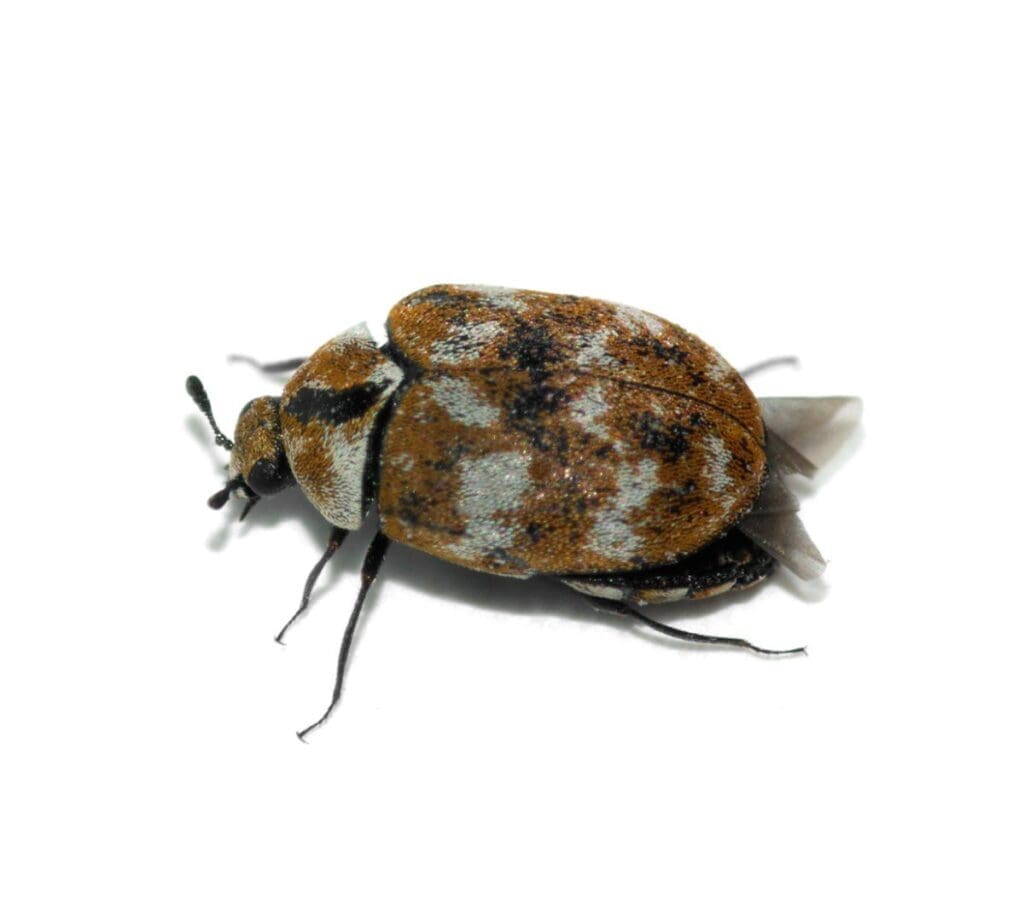
Chemical Treatments for Carpet Beetle Control
If natural or home remedies do not provide satisfactory results, chemical treatments can be more effective in eliminating carpet beetles. Here are some common chemical treatments used for carpet beetle control:
Insecticide Sprays
Insecticide sprays formulated specifically for carpet beetles can be applied to infested areas. Follow the manufacturer’s instructions carefully and apply the spray to carpets, rugs, furniture, and other areas where carpet beetles are present. Be sure to remove any pets or people from the treated area until the spray has dried completely.
Insecticide Dusts
Insecticide dusts, such as boric acid or diatomaceous earth, can be applied to cracks, crevices, and other hiding spots where carpet beetles may dwell. The dusts are abrasive and dehydrate the insects, ultimately killing them. As with any chemical treatment, read and follow the instructions provided by the manufacturer.
Fumigation
In severe cases of infestation, fumigation may be necessary. Fumigation involves the use of gaseous insecticides that penetrate deep into infested areas. This method requires professional assistance and should only be conducted by licensed pest control experts.
Conclusion
Carpet beetles may be small, but their potential for damage and health risks should not be underestimated. Identifying signs of infestation, implementing preventive measures, and taking prompt action to eliminate these pests are essential for maintaining a healthy and pest-free home. Whether you opt for natural remedies, chemical treatments, or professional assistance, addressing a carpet beetle infestation promptly will protect your property and the well-being of your family. Remember, a little prevention and quick action can go a long way in keeping these hidden dangers at bay!
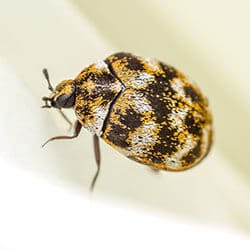

I am Randy, the author behind PestControld.com. Drawing from decades of experience, I aim to provide valuable insights, expert advice, and practical recommendations to help you make informed decisions when assessing viable pest control solutions.